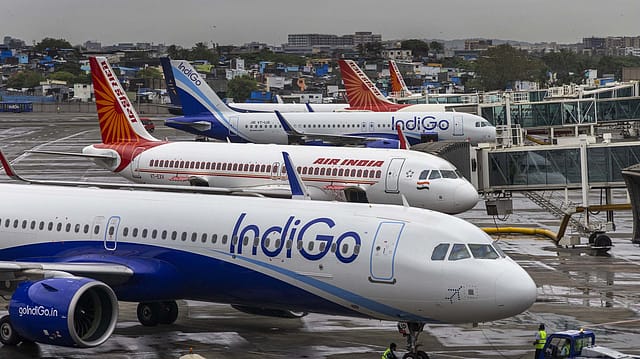International passenger traffic on Indian airlines beats pre-Covid levels: ICRA
ADVERTISEMENT

International passenger traffic for Indian carriers surged to around 22 lakh in May 2022, surpassing the pre-Covid levels of around 17.7 lakh by 24%, according to rating agency ICRA.
However, India's domestic air passenger traffic stood at 1.14 crore in May 2022, around 7% lower compared to 1.22 crore in May 2019, the rating agency says.
The waning Covid-19 infections resulted in a year-on-year growth of 4.4 times in domestic air passenger traffic in May. On a monthly basis, domestic air traffic rose 5% from 1.09 crore in April 2022.
Capacity deployment in May 2022 was marginally lower by only around 1% than the pre-Covid levels, ICRA says.
For May 2022, the average daily departures were at around 2,784, notably higher than the average daily departures of 894 in May 2021, and higher compared to 2,726 in April 2022, says Suprio Banerjee, vice-president and sector head at ICRA. "The average number of passengers per flight during May 2022 was 132, against an average of 133 passengers per flight in April 2022 and lower than an average of 139 passengers per flight in May 2019."
December 2025
The annual Fortune 500 India list, the definitive compendium of corporate performance, is out. This year, the cumulative revenue of the Fortune 500 India companies has breached $2 trillion for the first time. Plus, find out which are the Best B-schools in India.
ICRA cautioned that steadily rising aviation turbine fuel (ATF) prices and general inflationary environment continue to dampen the industry earnings, with prices in June 2022 being higher by 90% on a yearly basis.
"Elevated ATF prices aggravated by geo-political issues will remain a near term challenge for the industry and will continue to weigh on the profitability of Indian carriers. It is estimated that the yields for domestic routes have moved up on an average between 18-20% over the past 12 months," says Banerjee.
While airlines have been increasing yields but the same has not been adequate to offset the impact of the rising ATF prices, the rating agency warns.
ICRA continues to maintain a "negative" outlook on the Indian aviation industry, reflecting its view that the financial performance of Indian airlines is likely to remain under pressure in the near term, even as recovery in domestic passenger traffic has been healthy.
"A return to normalcy will lead to recovery in passenger load factors, which in turn will aid revenues; however, elevated ATF prices will continue to weigh on the earnings of Indian carriers in FY2023," says ICRA.
The rating agency expects the recovery in domestic passenger traffic to be fast paced in FY23 driven by normalcy witnessed in domestic operations.
An overhang of any further Covid-19 wave looms on the sector in case the recent rise in Covid infections in certain pockets of the country spreads nationwide, it adds.
ICRA expects the industry aggregate loss to moderate to around ₹14,000-16,000 crore in FY23 due to the expected recovery in passenger traffic and lower interest burden due to significant reduction in Air India's debt.
While some airlines have adequate liquidity from a strong parent, which is likely to help them sustain over the near term, for others, the credit metrics and liquidity profile have been under significant stress over the past few years.
To ease liquidity pressures, most airlines had undertaken several cost rationalisation measures, including salary cuts for their employees, leave-without-pay options and laying off of pilots and crew members to cut costs during the pandemic.
Some airlines have also sought a deferment in their lease rental payments to improve their liquidity positions. Others have also entered sale and lease back transactions to shore up liquidity in the near term.
However, until profitability and cash inflows improve considerably, most airlines will require funding support to meet their expenses, says ICRA.
